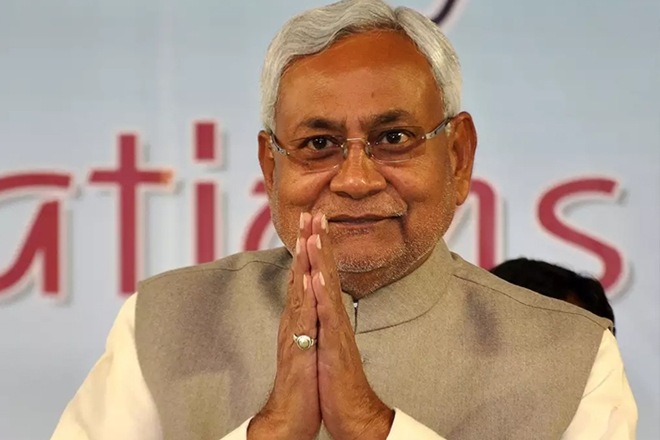A year after Bihar saw a major political realignment, the year 2018 was bound to produce some interesting stories – both politically and socially — in the run-up to the Lok Sabha polls slated for early 2019. Since the high-voltage dramatic political turn of events in July 2017 that saw Chief Minister Nitish Kumar return to the NDA-fold, all eyes were now set on the BJP as it faced a stupendous challenge to keep all partners – JD(U), LJP, RLSP and HAM intact. The opposition Rashtriya Janata Dal (RJD) and Congress, on the other hand, remained on their toes attacking the BJP and JD(U).
The year will be remembered for Nitish Kumar’s stunning comeback with the strong backing of the BJP which has a strong cadre on the ground. The party successfully bargained with its ally BJP to enjoy the same position where it was before it parted its way in 2013 when Narendra Modi was declared the NDA’s prime ministerial candidate. The JD(U) that had contested 2014 general elections solo and won just two out of 40 Lok Sabha seats, negotiated with the BJP to reach a consensus to contest an equal number of seats in 2019. This also gave Nitish a much-needed opportunity to give a push to his popularity among the forwards who account for nearly 17% of the state’s 10 crore population. The forwards mainly include Bhumihar, Brahmin, Rajput and Kayastha who are seen as hardcore supporters of the BJP.
However, as a whole, the year didn’t go down well for the NDA. The year 2018 saw rivals turning friends and vice versa. The year started for the NDA on a low note when Hindustan Awam Morcha (HAM) of former chief minister Jitan Ram Manjhi quit the coalition and joined the Grand Alliance of RJD-Congress and Left. Manjhi, once a close confidant of Nitish, had floated his own political party in May 2015 owing to the differences with the JD(U) president. He had then joined the BJP-NDA of which Nitish Kumar was not a part.
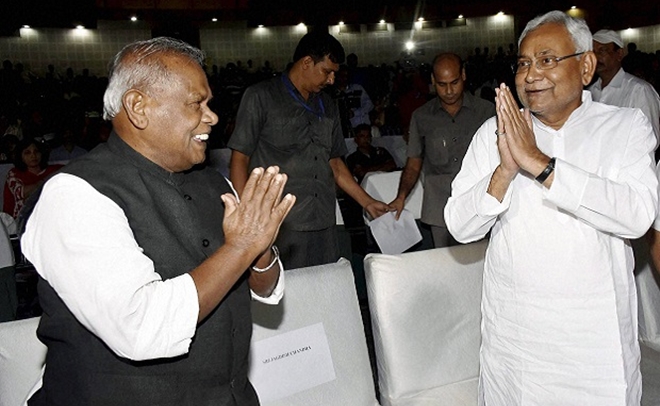
The exit of Manjhi, who is a Musahar by caste (Mahadalit) which constitutes 3% population, had however minimal impact on the NDA’s prospect. But the second half of the year came as a shock for the BJP-led NDA when long-time friend Upendra Kushwaha walked out of the coalition and also quit as a minister in the Modi government. Kushwaha had ample signals that he was unhappy with the seat-sharing pact among the NDA parties and was spotted with many opposition parties on many occasions.
Interestingly, all RLSP elected representatives in Bihar’s bicameral legislature revolted against Kushwaha’s decision and opted to remain in the NDA. This came as a boon for the both BJP and JD(U). It is worth mentioning here that Kushwaha was at loggerheads with the BJP ever since Nitish Kumar returned the NDA. Kushwaha is a Koeri by caste, the second largest in the OBC group after Yadavs (14.4%). And Since Bihar’s politics revolves around the caste numbers, his friendship with the BJP would have had definitely brought an incentive. Koeri comprises around 6 % of the total population in the state and traditionally votes with Kurmi community due to cultural affinity. The Kurmi constitutes 4% of the population. Nitish Kumar is a Kurmi by caste.
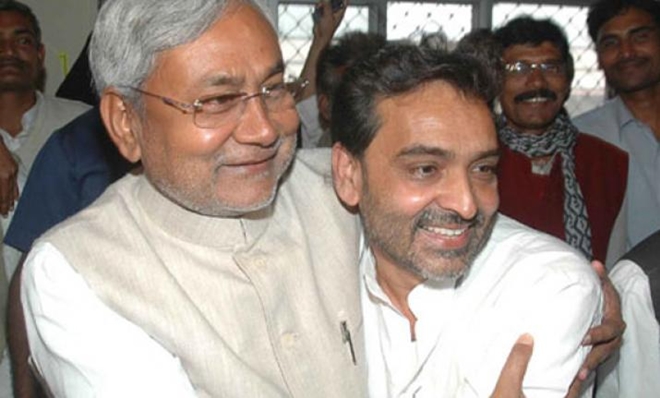
By the end of 2018, Vikassheel Insaan Party (VIP) chief Mukesh Sahani also announced his departure from the NDA and joined the Grand Alliance. Sahani, a former Bollywood set designer, was believed to be very close to BJP president Amit Shah. Sahani who has declared himself to be the son of Mallah said that the BJP government has failed on all fronts in fulfilling the promises it had made in the run-up to the polls. It is believed that Sahani has a strong support base in different pockets of the state.
After Kushwaha’s exit, the BJP and JD(U) finally ended suspense over the seat-sharing agreement. BJP president Amit Shah, Nitish Kumar and LJP’s Ram Vilas Paswan appeared together before media in Delhi to declare that the first two will field candidates on 17 seats each and LJP on the remaining six.
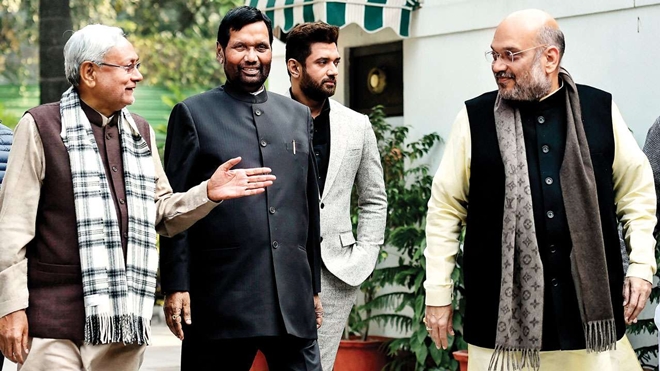
Muzaffarpur sex scandal
Another much-talked news that rocked the state was Muzaffarpur sex scandal. The news cast a long shadow over the state that was once infamous for criminal activities like kidnapping and murder. The nation woke up to a horror story in the month of July when Mumbai-based Tata Institute of Social Sciences (TISS) in its report concluded that over 30 minor girls were subjected to sexual abuse in the state-run shelter home that was run by the NGO of Brajesh Thakur.
Jolted by the disclosure, the Nitish Kumar government took corrective measures and a CBI probe was ordered into the crime. This came as an opportunity to the opposition to lambast the BJP-JD(U) government. The scandal also cost JD()U leader and Social Welfare minister Manju Verma her chair. Verma landed in jail along with her husband Chandrashekhar Verma for their alleged involvement in the crime. Both were booked under Arms Act after a CBI raid at their home led to recovery a huge cache of ammunition.
Prashant Kishor joins Janata Dal (United)
In the month of September, the Janata Dal (United) got a big push when election strategist Prashant Kishor formally joined Bihar Chief Minister Nitish Kumar’s party. Kishor was inducted into the party by Kumar at the state executive meeting of JD(U). The 41-year-old was given a seat next to the CM at the state executive meeting, prompting talks that he will be the second-in-command. A few weeks later, the party announced that Kishor has been appointed as the vice-president of the party and it is believed that he had played a crucial role in finalising the seat-sharing deal with other NDA partner.
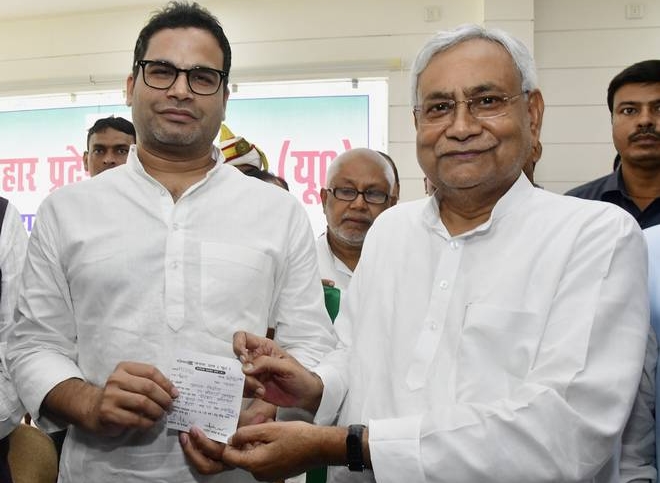
Kishor’s inclusion into the JD(U) helped to bolster the party’s prospects just a few months ahead of the Lok Sabha polls. Kishor had shot to fame in 2014 when he successfully managed the poll campaign for BJP’s Narendra Modi. It is now evident that he will play a key role in designing the party’s campaign in the run-up to the Lok Sabha polls and try to repeat 2015 performance when he worked for Kumar in lieu of money and handed him a handsome victory.
What in 2019?
The BJP-JD(U)-LJP combine faces a stiff challenge from the Grand Alliance in a state where caste equations continue to dominate election outcomes. The NDA will look to upset the RJD-Congress coalition and therefore retaining LJP’s Paswan was crucial for it. The NDA leaders while announcing the seat-sharing deal in December had exuded confidence that they will win maximum seats. Nitish Kumar’s JD(U) said that NDA will repeat its 2009 performance when it had won 32 alone in Bihar. The NDA had pocketed 159 seats in 2009. In 2009, LJP was not a part of NDA and in 2014, the JD(U) had contested alone.
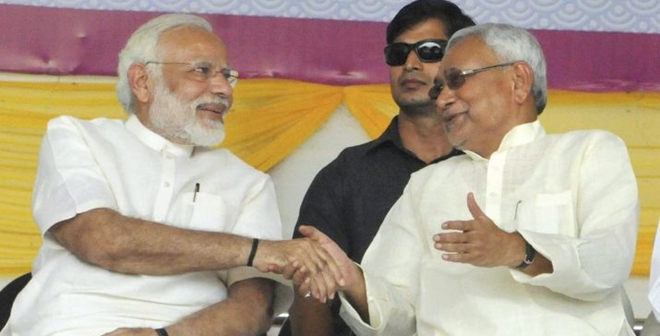
The election will be a matter of prestige for the NDA and a test of popularity for Nitish Kumar and BJP’s Narendra Modi.

